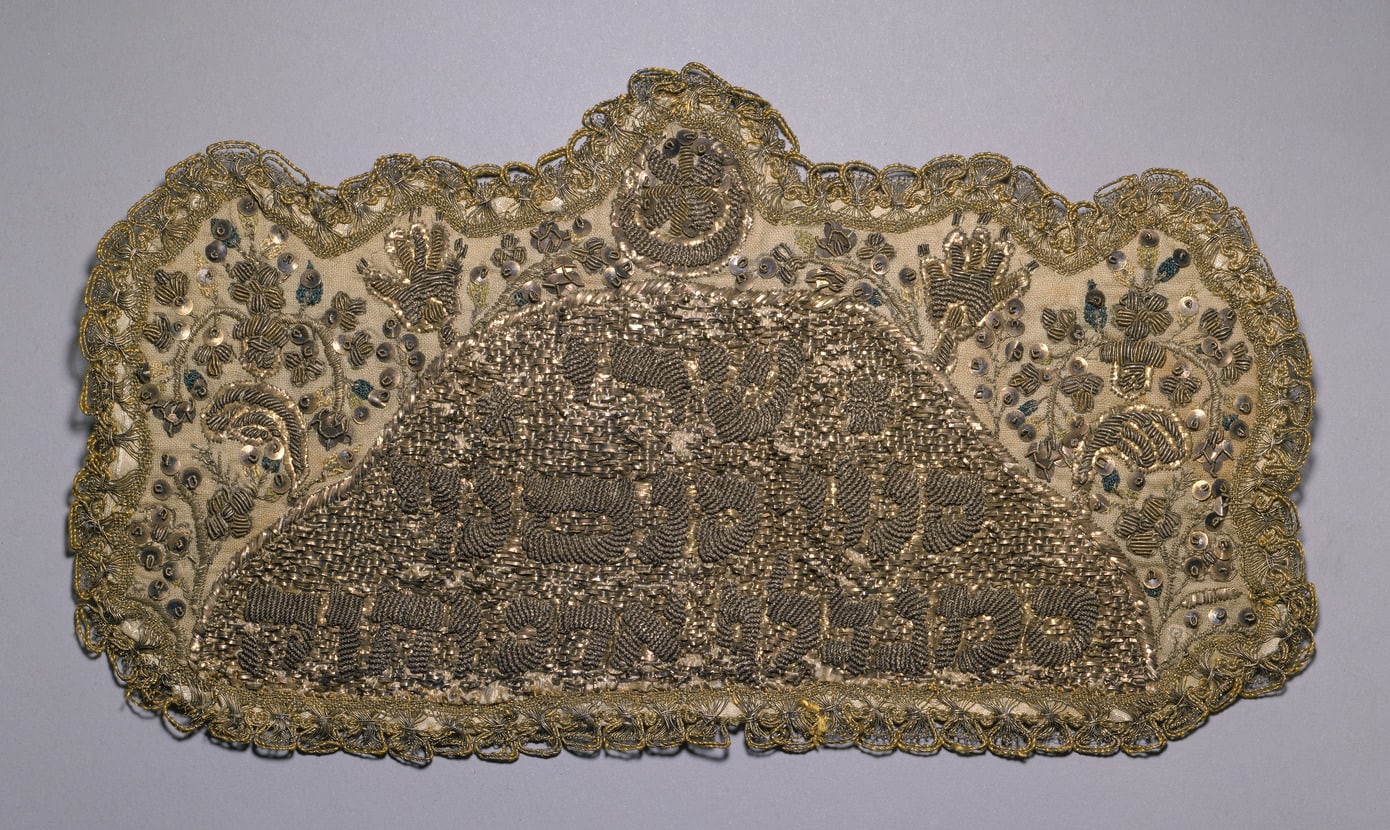
- Object Name:
- Amulet
- Place Made:
- Ottoman Empire
- Date:
- mid-19th century
- Medium:
- Silk: embroidered with metallic thread, tinsel, and sequins; metallic lace
- Dimensions:
- 6 1/2 × 11 1/4 in. (16.5 × 28.5 cm)
- Credit Line:
- Gift of Dr. Harry G. Friedman
- Accession Number:
- F 646
Not On View
This oblong panel with scalloped upper edge was once the front of a head covering worn by the mother of a newborn child. The central area bears an embroidered Hebrew inscription in metallic thread set off by tinsel: Almighty, Sanvai, Sansanvai, Semanglof, Adam and Eve. Sanvai, Sansanvai, and Semanglof are angels believed to neutralize the power of Lilith.
Decorative motifs include flowering branches, two hamsa (an apotropaic symbol) and a star and crescent found on Ottoman Judaica of the eighteenth and nineteenth centuries.
The wearing of special costume elements by a post-partum mother and the dressing of the bed with silk coverings are Ottoman Jewish customs.
Decorative motifs include flowering branches, two hamsa (an apotropaic symbol) and a star and crescent found on Ottoman Judaica of the eighteenth and nineteenth centuries.
The wearing of special costume elements by a post-partum mother and the dressing of the bed with silk coverings are Ottoman Jewish customs.
Information may change as a result of ongoing research.